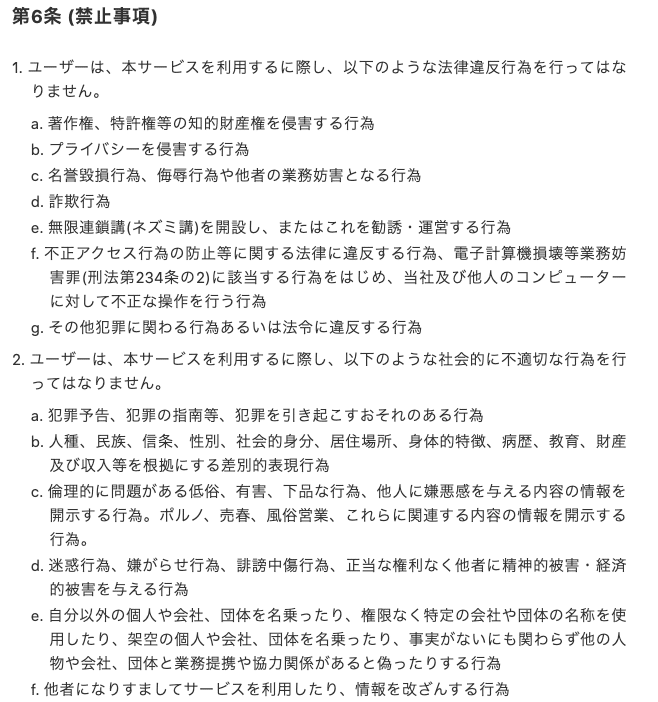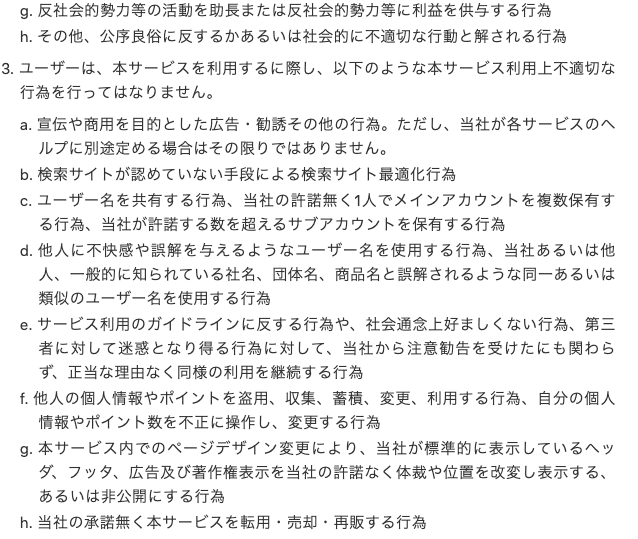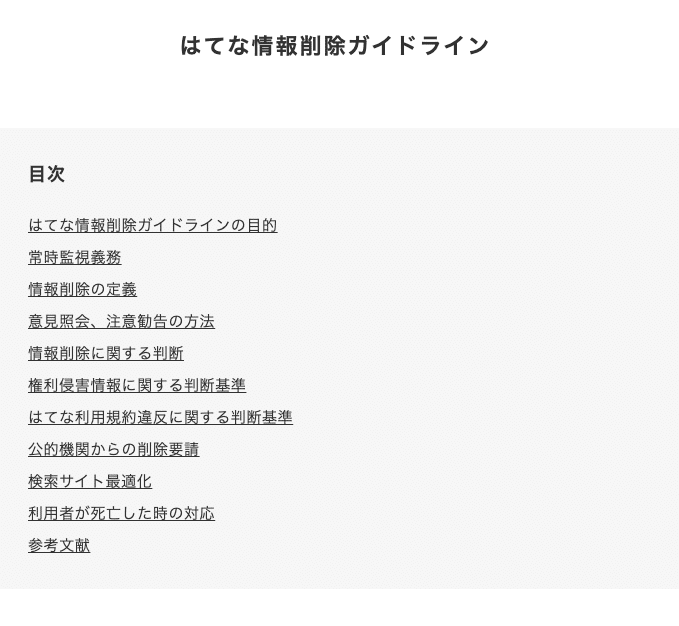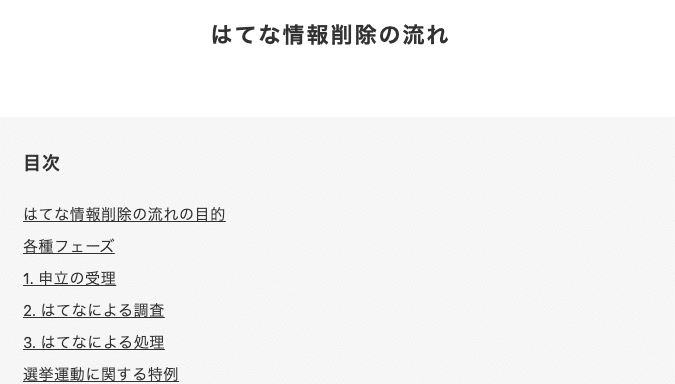What is the Method to Remove Defamatory Articles on Hatena Blog?

There are various blogs on the internet, ranging from those written by individuals to those by celebrities, and many of you have probably read one at some point. Sometimes, when you search on Google, someone’s blog may come up in the results. Hatena Blog is one of these blog services, and many people use this service to write and read articles. The appeal of blogs is the freedom to write articles and share them with anyone. However, what can one do if they are defamed or slandered through a blog? In this article, we will explain how to manage reputational damage in the event of defamation posted on Hatena Blog.
Explanation about Hatena Blog
Hatena Blog is one of the blog services operated by Hatena Co., Ltd. Its predecessor was a service called Hatena Diary, which ended in the spring of 2019 (Heisei 31). Counting from there, it has been in existence since 2003, making it a relatively long-standing blog service.
One of the features of Hatena Blog is that anyone can easily create a blog, and by using paid plans, you can create a blog that is strong in SEO and advertising revenue. Therefore, there are many blogs for commercial use, and when you search for words on search engines like Google, Hatena Blog often appears at the top.
On the other hand, since Hatena Blog allows anyone to register for free and write a blog, there is a high possibility that blog articles containing uncertain information or content that includes slander and defamation will be published. And because it’s a blog that’s strong in SEO, if such a blog is posted at the top of the search results, it can be said that the damage caused by slander and defamation can easily spread widely.
What are Negative Reviews Posted on Hatena Blog?

Hatena Blog is a blogging service that anyone can start, so there are articles that contain undesirable descriptions and expressions. Here, we will introduce an example of a potential negative article.
When the Article Contains Defamation
For instance, let’s say there are multiple articles published stating, “Restaurant A only has bad-tasting menus! It’s not delicious!” If you are on the side of Restaurant A, this is nothing but a business obstruction. As defamation, it is a post that you would want to delete immediately. On Hatena Blog, not only those that constitute illegal acts, but also those that violate the terms of use are subject to deletion. And, defamation is also listed as a prohibited act in the terms of use, so if Hatena determines this to be defamation, there is a high possibility that it will be deleted. Please check the details later.
When Personal Information that Can Identify the Individual is Posted
Articles containing personal information can be undesirable depending on the content, how the person perceives it, and its social impact. Moreover, information such as addresses and criminal records are information that people do not want others to know, so it constitutes a privacy violation. Such posts, once posted, may not be able to restore that privacy, so it can be said that they should be deleted immediately.
When the Comment Section Contains Defamation or Privacy Violation
For example, let’s say a gourmet blogger has posted a visit record of “A Confectionery Shop”. Even if the article itself is positive and has no problems, suppose there are negative comments like, “The cake here is poison. There’s a rumor that they use expired ingredients. No one in the neighborhood eats it.” Even in such cases, it can lead to reputational damage, so it can be said that the confectionery shop would want to delete such content.
How to Request Removal for Violation of Terms of Use
Hatena Terms of Use
Article 6 of the Hatena Terms of Use lists prohibited activities. If the review you want to remove falls under any of these categories, it could be subject to removal.


Also, the Hatena Information Removal Guidelines classify the content that could be subject to removal. Here, the content of the article you want to remove, the sender, and the claimant are classified in detail as criteria for whether to remove it. For example, child pornography images are immediately removed by Hatena without any need for consultation or advice to the sender, while pornographic information that merely causes disgust is subject to consultation with the sender or a request for voluntary removal. Even if it may fall under the Terms of Use, please refer to the Information Removal Guidelines for criteria on whether it may be removed or whether it will be removed immediately.

How to Make a Removal Request
While Hatena does not have a dedicated form for information removal requests, the page “Hatena Information Removal Process” provides a detailed explanation of how to make a removal request. It is advisable to start your removal request from here. This application is treated as a transmission prevention measure, so only a lawyer can make the request if you are using a representative. If you are making the request yourself, you should follow this process.

Example of Making a Removal Request for Violation of Terms of Use
As mentioned above, Hatena Blog uses a method called transmission prevention measures, which is stipulated in the Provider Liability Limitation Law, to make removal requests. In principle, transmission prevention measures can be taken when an individual’s legal rights are infringed, but it seems that even if it is a removal request due to a violation of the terms of use, you can make a claim in the same way on Hatena Blog.

When making a claim, you will need to fill in the above items. Follow these items, specify which blog it is about, and make it easy for the Hatena Blog side to identify. In cases where you are arguing about a violation of the terms of use, rather than a legal rights infringement such as defamation or privacy infringement, it would be good to extract the relevant terms of use in the field of the rights you claim to have been infringed, and describe the reason for the violation of the terms of use in the field of the reason why you claim your rights have been infringed.
For example, let’s take the case where you want to remove an article containing discriminatory expressions such as “It’s uncomfortable because there are only ○○ people (foreigners) at Restaurant A”. After filling in each item, it would be good to write in the reason field as follows:
Thank you for your attention. I am ○○, the manager of Restaurant A. I would like to request the removal of this article. In the blog at this URL, it is written that “It’s uncomfortable because there are only ○○ people (foreigners) at Restaurant A”. I believe this is referring to the restaurant I manage. And, saying “It’s uncomfortable because there are only ○○ people (foreigners)” is a discriminatory expression that insults people based on race, ethnicity, and skin color, and it falls under Article 6.2.b of the Terms of Use, “Discriminatory expression based on race, ethnicity, creed, gender, social status, residence, physical personalityistics, medical history, education, property, and income, etc.” Such postings have a negative impact on the work of our employees and are unacceptable, so I would like to request removal. Thank you for your cooperation.
Although transmission prevention measures are a method stipulated by law, they are ultimately a request for voluntary removal. If the removal is not made due to a violation of the terms of use, it will be necessary to take stronger legal measures such as claiming legal rights infringement through transmission prevention measures or filing a lawsuit.
When Requesting Removal on the Grounds of Illegality

Legal Measures Available
If the content infringes on rights or violates the law, you can dispute its removal through a lawyer in court. The legal measures that can be taken in relation to online reputation damage control are broadly divided into:
- Request for voluntary removal through a transmission prevention measure request
- Request for post deletion and provisional disposition
- Request for disclosure of sender information (IP address disclosure request, name and address disclosure request)
- Claim for damages (claim for damages after identifying the poster)
among others.
Claims to Make Legally
So, when making a legal request for deletion, the first thing to consider is to claim “defamation”. Defamation is established when:
- It is “public”
- It “indicates a fact”
- It “damages a person’s reputation”
All of these facts apply. For example, if a comment based on untrue content such as “Restaurant A uses expired ingredients, so everything is rotten” is posted, let’s look specifically at whether it meets the requirements from 1 to 3. First, posts on the Internet like this one on Hatena Blog can be said to be “public” because they can be viewed by an unspecified number of people on the Internet.
Next, “indicating a fact” means stating a specific fact that is sufficient to lower a person’s social evaluation, regardless of whether it is true or false. In this case, the information that expired ingredients are being used is a comment indicating a fact of violation of the Food Sanitation Act, which is sufficient to lower social evaluation.
Finally, to “defame”, it is sufficient if there is an abstract risk of damage to social evaluation, and it is not necessary for the reputation to be actually infringed. It is not necessary to prove that the post in question was viewed by an unspecified number of people on Internet news and SNS and that criticism and protests against Restaurant A flooded in. It is enough to say that there is an objective risk.
Please refer to the following article for detailed explanations of the requirements for defamation and other details.
https://monolith.law/reputation/defamation[ja]
Removal through the Court (Provisional Disposition)

Normally, when seeking removal due to legal violations such as defamation, the first step is to request a transmission prevention measure. However, as mentioned earlier, this is a method of requesting removal without going through the court, asking for voluntary removal by the provider (Hatena Blog). In Hatena Blog’s terms of service, it is clearly stated that there may be cases where removal is legally possible, so it is highly likely that removal will occur through this method. However, as this is a voluntary measure, there may be cases where removal is not carried out depending on the judgment. In contrast, in procedures through the court, if removal is approved in the trial, the binding force of the judgment arises, and the provider (Hatena Blog) is obliged to comply with the removal.
Therefore, if the transmission prevention measure is not approved, it is effective to transition to legal proceedings. Provisional disposition is a method stipulated in the Civil Preservation Law, and it is used to seek temporary measures before obtaining a final judgment through a formal lawsuit when a quick resolution is required. In cases like this, where there are defamatory reviews, there is a high risk of irreparable damage once they spread, so it is effective to use the provisional disposition system to seek immediate removal of information. When a provisional disposition order is issued, the court orders the other party to remove the post, so the other party is obliged to comply. In the case of provisional disposition, if you consult with a lawyer who has expertise in reputation damage measures, in many cases, it can be realized in about 2-3 months from the request to removal, making it an effective measure. For detailed explanations about the removal of articles in cases of defamation or reputation damage, and the procedure for provisional disposition, please refer to the article below.
https://monolith.law/reputation/provisional-disposition[ja]
Identification of Posters through Provisional Dispositions
By seeking the assistance of a lawyer for the identification of posters through provisional dispositions, it is possible to disclose information such as the poster’s IP address through a so-called sender information disclosure request. This could potentially lead to the identification of the poster. Once identified, you can seek damages for the harm caused by defamatory posts from the identified sender. The flow of these procedures is explained in detail in the article below.
https://monolith.law/reputation/disclosure-of-the-senders-information[ja]
Summary
Hatena Blog hosts a variety of articles and blogs across numerous categories. Given the high degree of freedom in posting and the frequent appearance in top search results, it is conceivable that various forms of reputational damage and rights infringements may occur. As we have quoted in the article, the deletion guidelines, terms of use, and deletion request procedures for Hatena Blog contain very detailed and specialized content. This makes it difficult for individuals to handle, and since it involves legal actions, the assistance of a lawyer is necessary. First, consult with a lawyer to determine whether the said review constitutes an infringement of rights or violates any laws.
Category: Internet





















